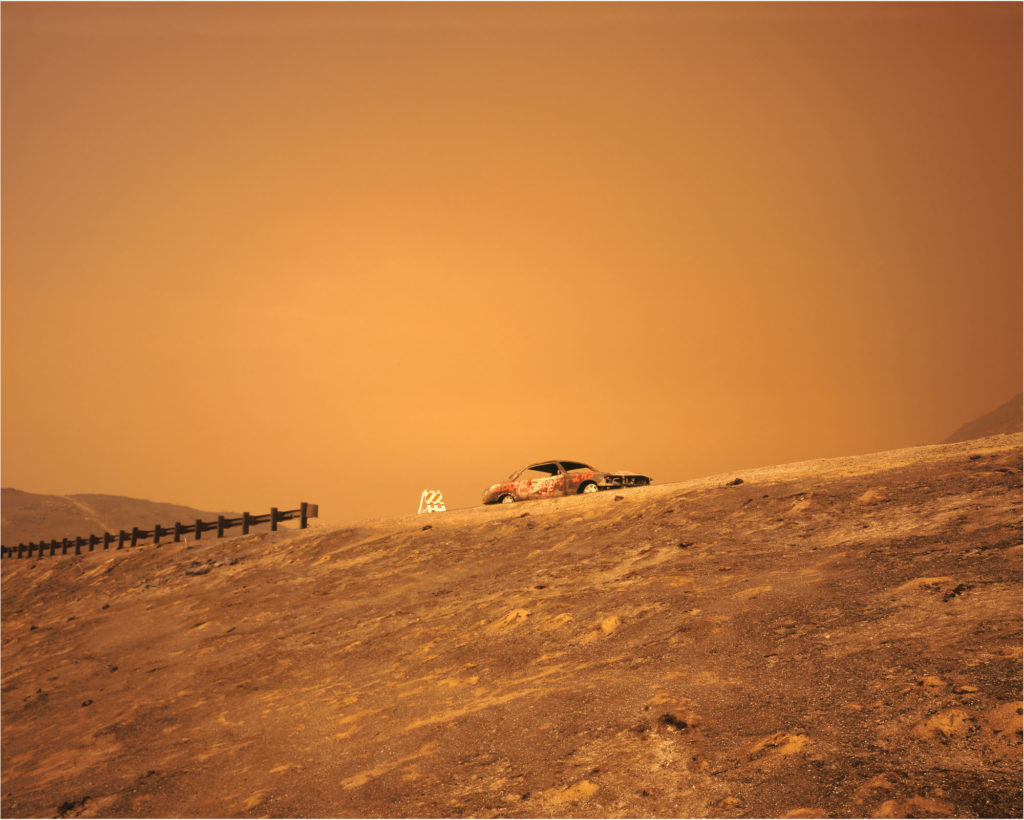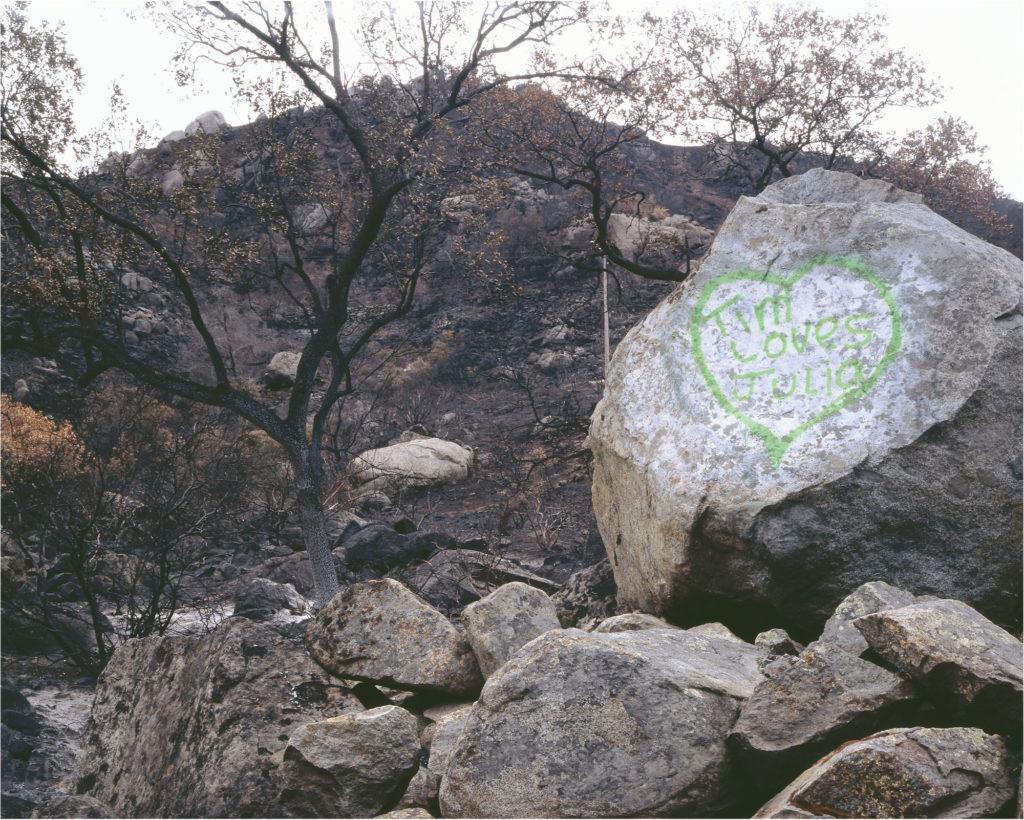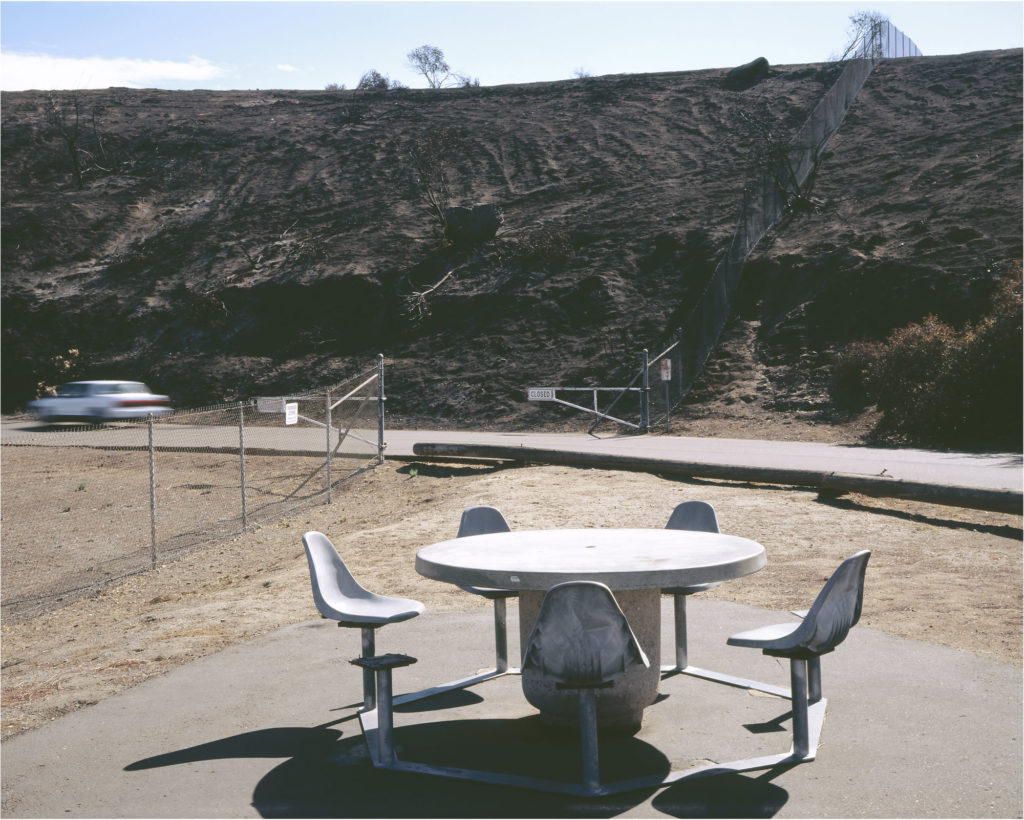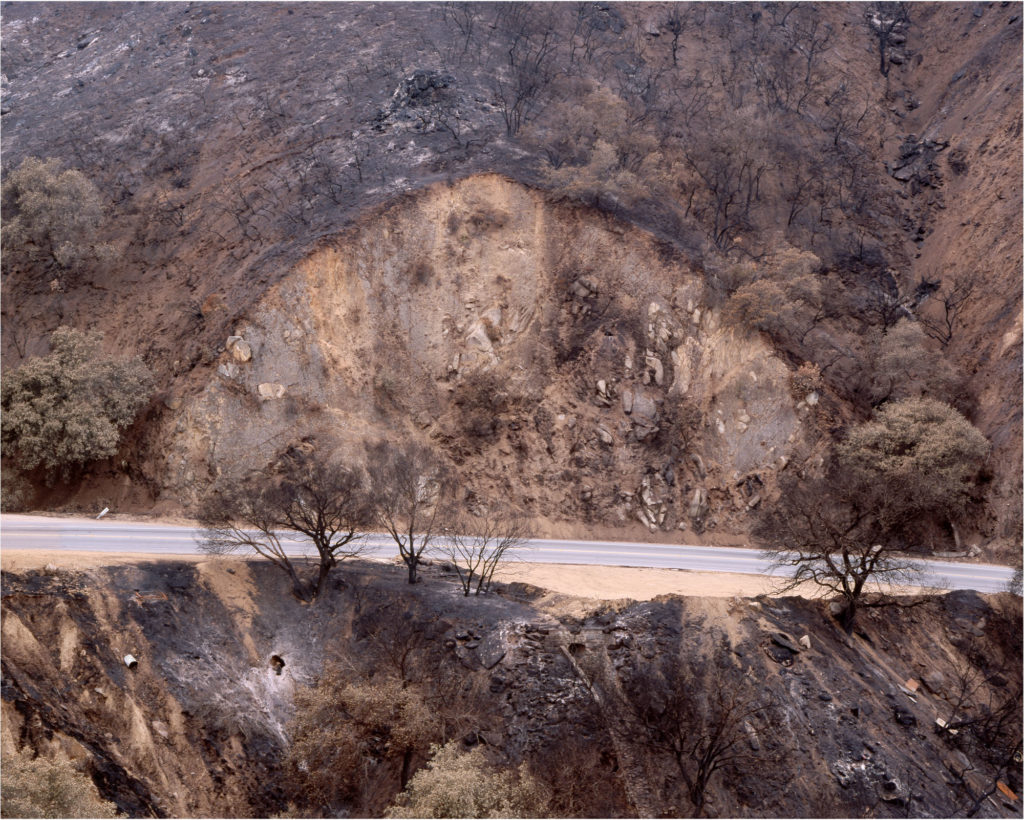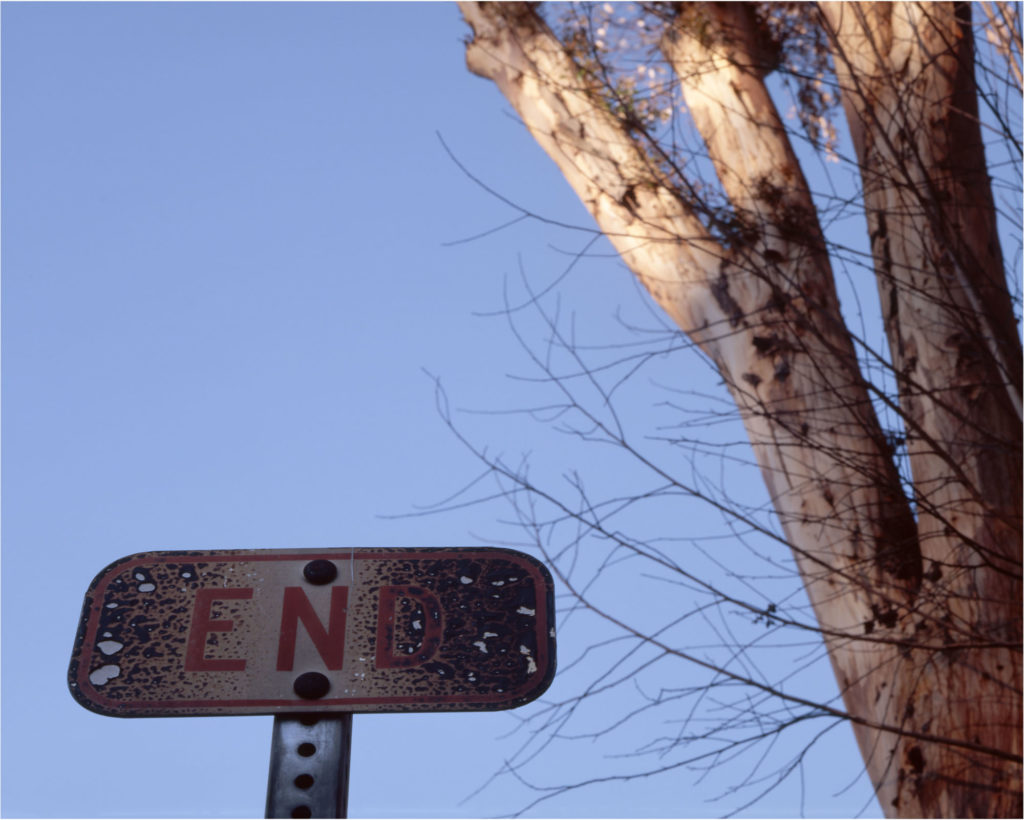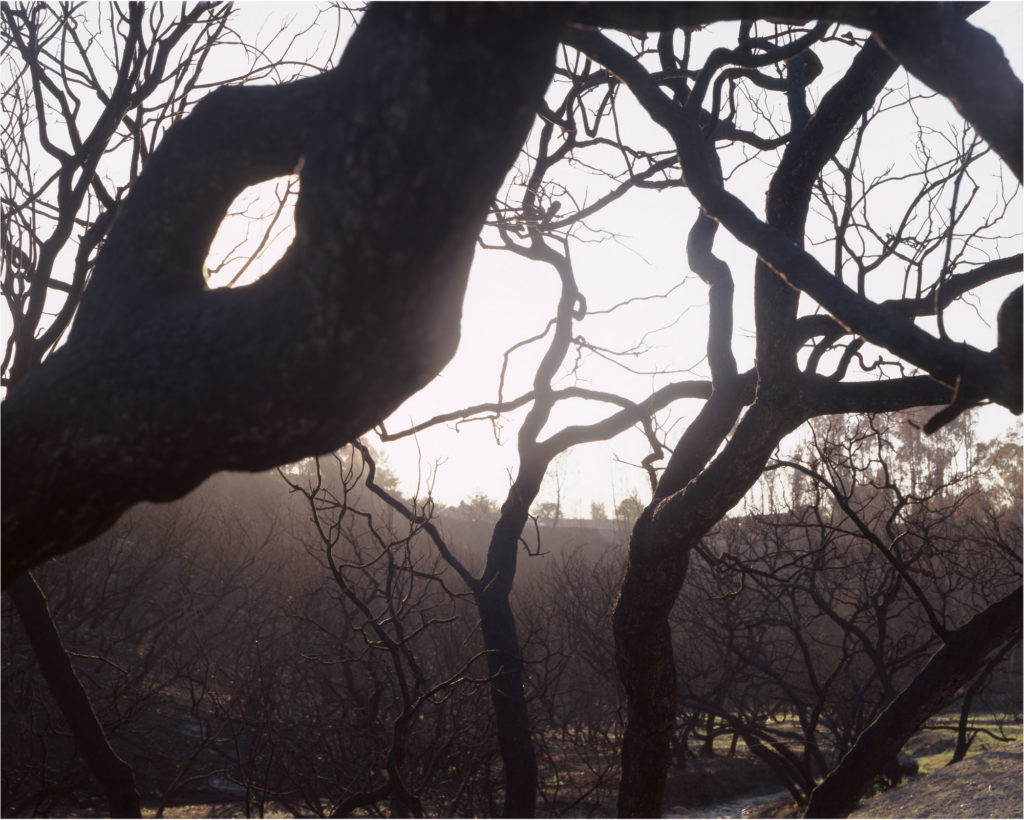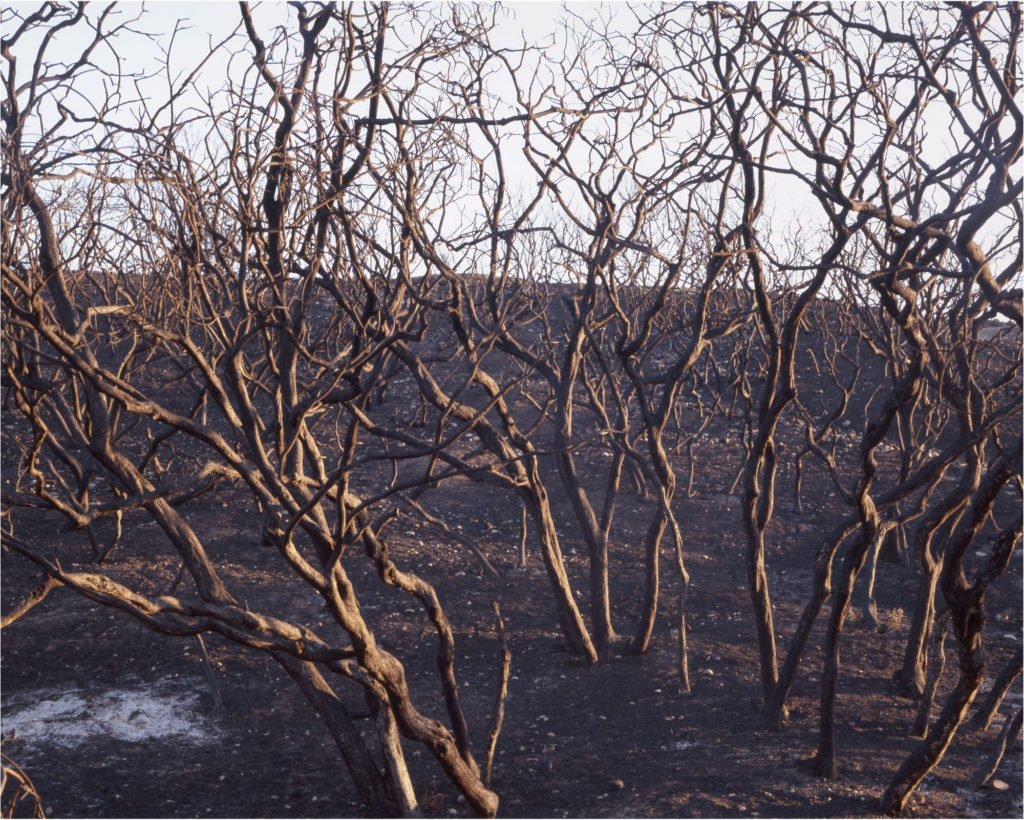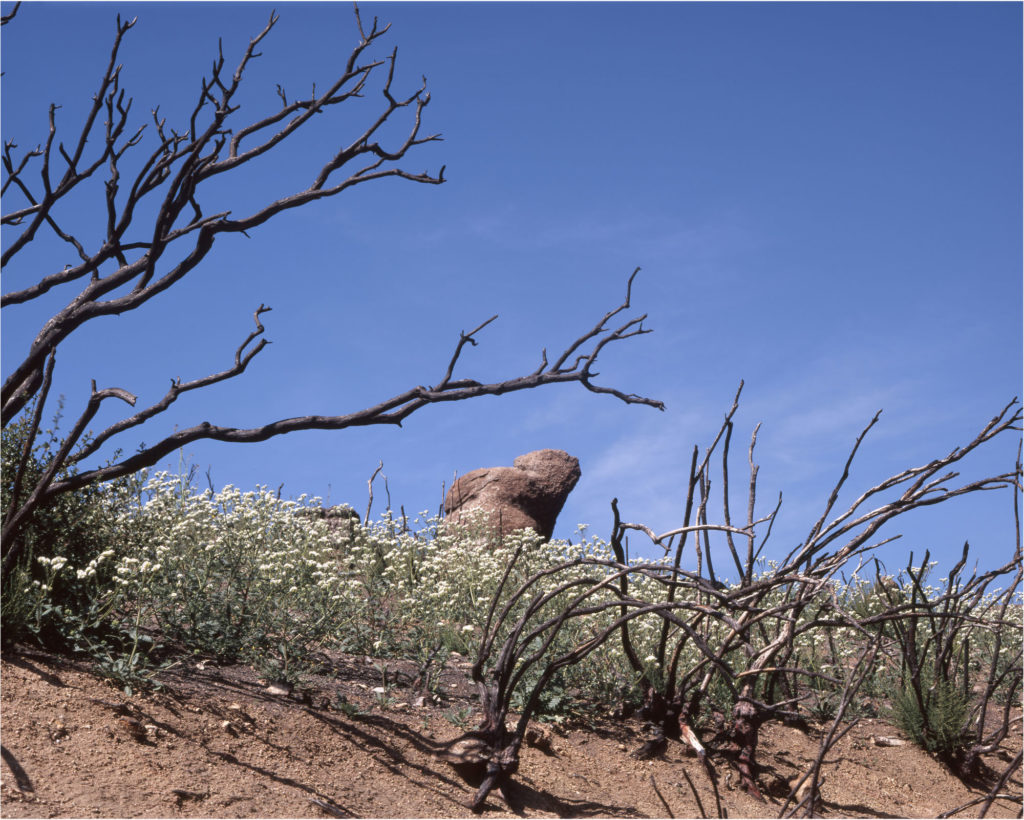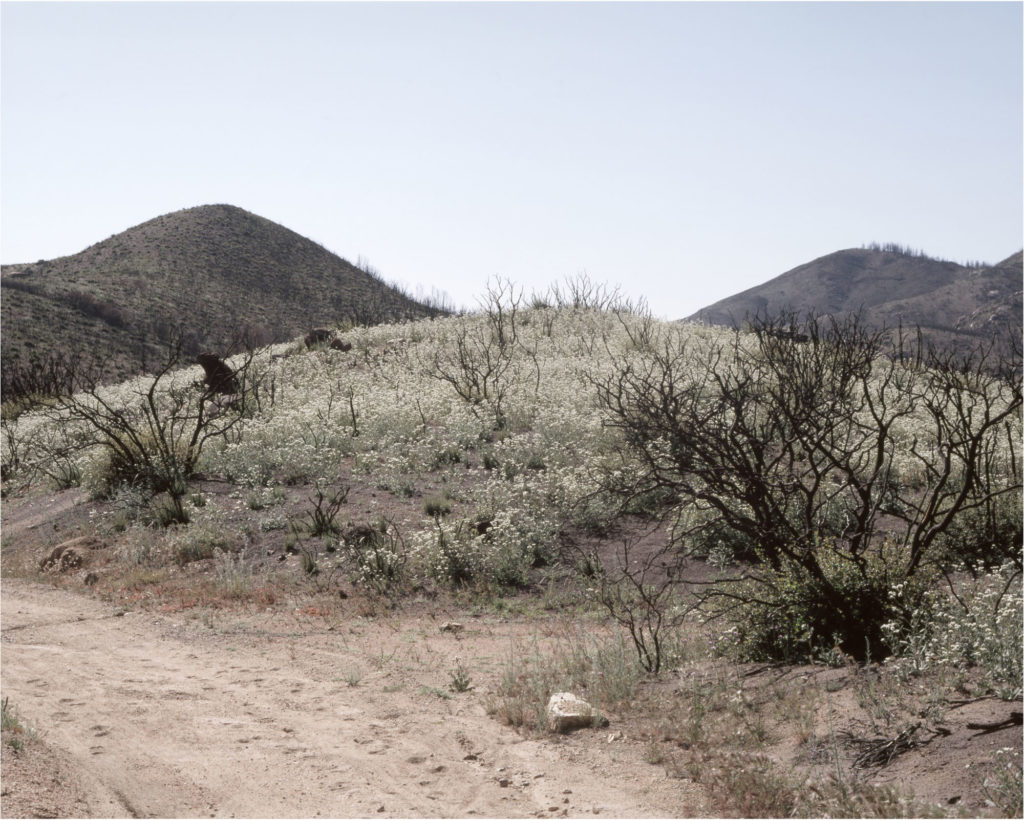The Fire Works–Landscapes
When I started working on this series I had pretty much bought into the mistaken notion that fairly frequent wildfires were very much a part of the natural process in Southern California. It appeared that humans residing near the edges of wild areas were living with the threat that sometimes nature would push back human advances into the landscape and take these edge settlements during the fires. I had some mistaken poetic notion that at these edges we could witness the occasional balancing out of an equation usually weighted to the advantage of the dominant human species.
The reality of the story, though, is much more brutish and leaves me flailing about trying to find the poetry in it. Fires of natural origin are rare in Southern California, with CalFire estimating that 94% of the fires they responds to are of human origin. In fact, the October, 2003 Cedar Fire, the event that the photographs in this series document, had its origin in a hunter lost in the landscape. In the end, most of these fires are things we’re doing to ourselves—and to the environment. It’s usually not a case of nature fighting back.
At the time the fire was among the largest to strike California, but as the climate warms and the land desiccates fire is becoming and an increasing reality in the West.
Images 15 x 18¾ inches on paper 17 x 22 inches.
All images copyright 2003-2004 by James SOE NYUN. All rights reserved.
The images and music on this website copyright 1992-2022 by James SOE NYUN. All rights reserved.
